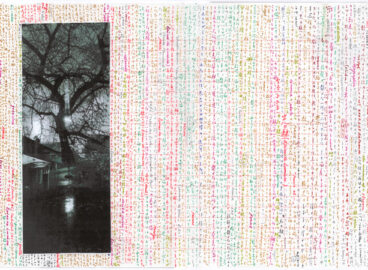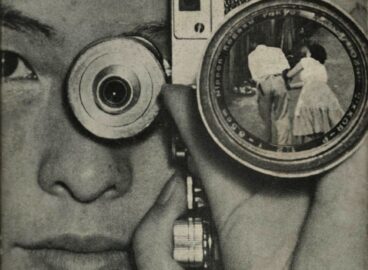Graphic scores tend to have multiple identities. Simultaneously, they can be design objects, artworks, and documents silently encoded with music whose future performance can depend, at least to some degree, on their existence. What can graphic scores tell us about music, art, design, and performance, and about their intersections?
During the late 1950s and the first half of the 1960s, many prominent composers on the international avant-garde music scene began producing graphic scores that employed new forms of notation and inscribed them on sheets that deviated radically from convention in size, shape, and color, as a new way to communicate ideas about music. In contrast to scores representing sound in traditional notation, graphic notation emphasized concepts and actions to be carried out in performance itself, resulting in “unexpected sounds and unpredictable actions” that may not even include the use of musical instruments. In 1962, two exhibitions of graphic scores were held in Tokyo, bringing together the work of Japanese and international experimental composers. The first, 4 Composers, presented scores by four Japanese musicians: Mayuzumi Toshiro, Ichiyanagi Toshi, Takahashi Yuji, and Takemitsu Toru. The second, An Exhibition of World Graphic Scores, was organized by Akiyama Kuniharu and Ichiyanagi Toshi to coincide with John Cage and David Tudor’s first visit to Japan. Crammed into a small gallery, that ambitious show featured close to 150 scores by dozens of Japanese and international composers and artists. Some of the works, such as the collaboration between designer Sugiura Kohei and composer Takemitsu Toru, were clearly made with exhibition display in mind.
This Curated Selection on post presents documentation of the exhibitions, primarily in the forms of scores, photographs, flyers, and planning materials from MoMA’s collection. Ironically, although scores typically function as instructions for musical performance, in the context of an exhibition, the sounds themselves of performance exist only as ideas. The double function of a score—both a means for performance, and a visual object—presents an interesting challenge to exhibiting graphic scores. Does it make sense to display scores in the same way as other printed matter or drawings? Where and when should performances take place? Why don’t the performances receive as much veneration as the scores? The answer to these questions depends on more questions: Where is the “work” (is it the material object, the duration of performance, or both)? What do we privilege as artists, musicians, curators, viewers, and listeners? Check out our selections below and send us your comments, ideas, and interpretations of the scores.
With many thanks to Sen Uesaki of the Keio University Art Center for research guidance.
4 Composers
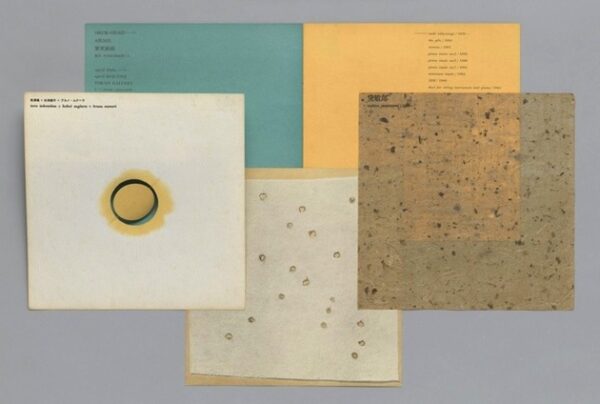
Page size: 9 5/16 x 9 1/4″ (23.6 x 23.5 cm). Top left and right, offset printed in gray; middle left, offset printed in color with die cut suspended with string; middle right, printed in black on handmade paper; bottom, offset printed in color. The Gilbert and Lila Silverman Fluxus Collection Archives, I.25. The Museum of Modern Art Archives, New York
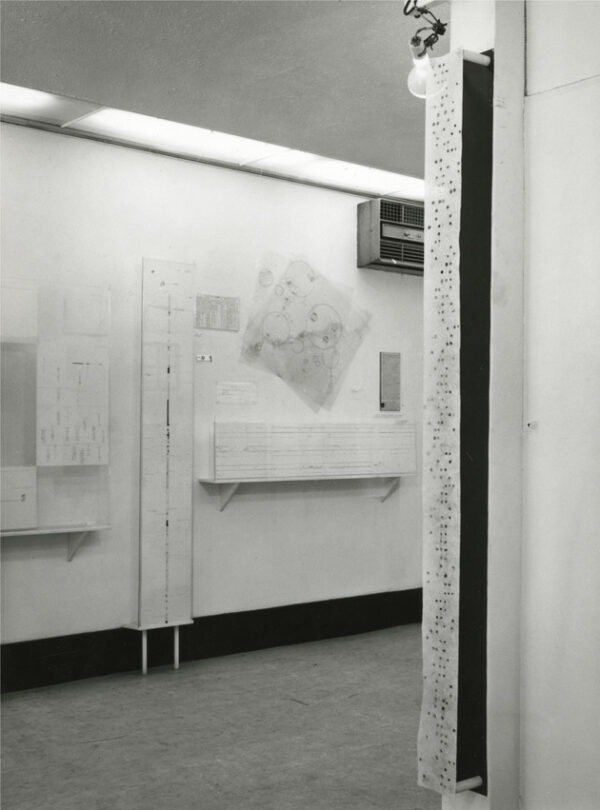
April 16–26, 1962. Gelatin silver print. 6 1/2 x 4 3/4″ (16.5 x 12.1 cm) Photographer unknown. The Gilbert and Lila Silverman Fluxus Collection Archives, I.11. The Museum of Modern Art Archives, New York
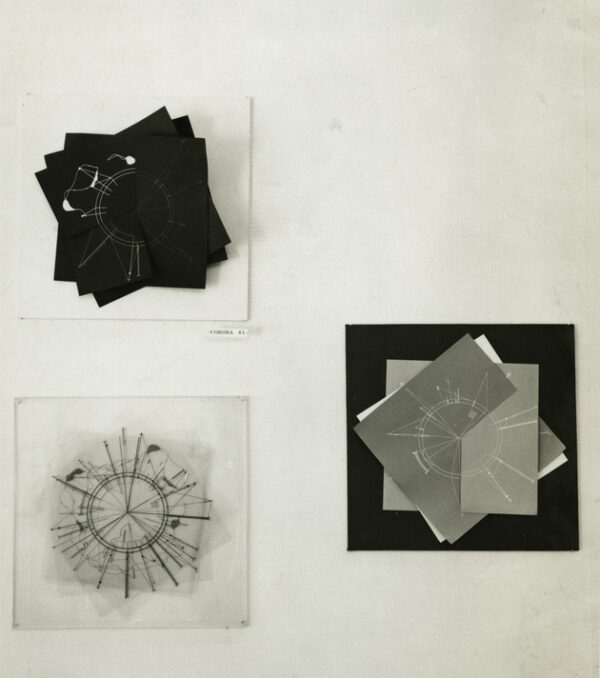
April 16–26, 1962. Gelatin silver print. 6 1/2 x 4 3/4″ (16.5 x 12.1 cm). Photographer unknown. The Gilbert and Lila Silverman Fluxus Collection Archives, I.11. The Museum of Modern Art Archives, New York
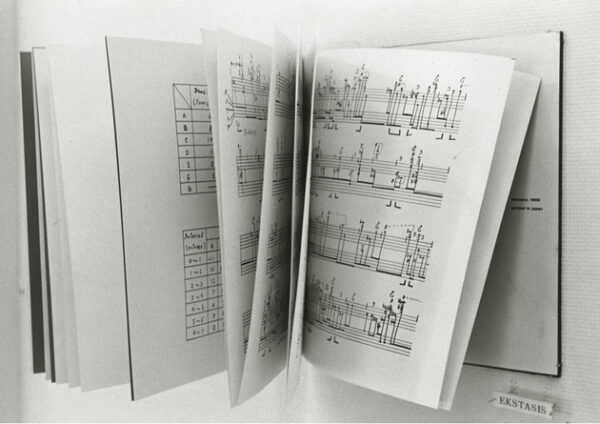
April 16–26, 1962. Gelatin silver print. 4 3/4 x 6 1/2″ (12.1 x 16.5 cm). Photographer unknown. The Gilbert and Lila Silverman Fluxus Collection Archives, I.11. The Museum of Modern Art Archives, New York
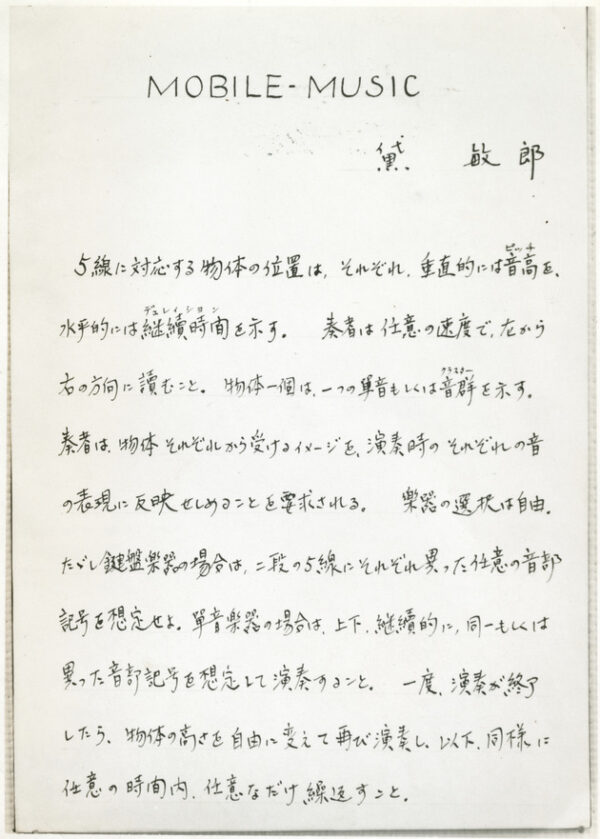
April 16–26, 1962. Gelatin silver print. 6 1/2 x 4 3/4″ (16.5 x 12.1 cm). Photographer unknown. The Gilbert and Lila Silverman Fluxus Collection Archives, I.11. The Museum of Modern Art Archives, New York
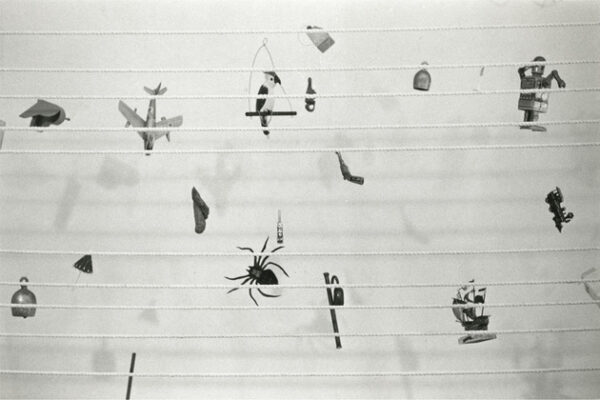
April 16–April 26, 1962. Gelatin silver print. 4 1/2 x 6 1/2″ (11.4 x 16.5 cm). Photographer unknown. The Gilbert and Lila Silverman Fluxus Collection Archives, I.11. The Museum of Modern Art Archives, New York
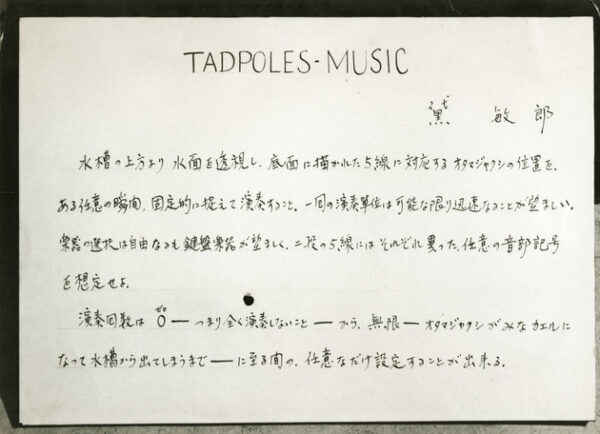
April 16–26, 1962. Gelatin silver print. 6 1/2 x 4 3/4″ (16.5 x 12.1 cm). Photographer unknown. The Gilbert and Lila Silverman Fluxus Collection Archives, I.11. The Museum of Modern Art Archives, New York
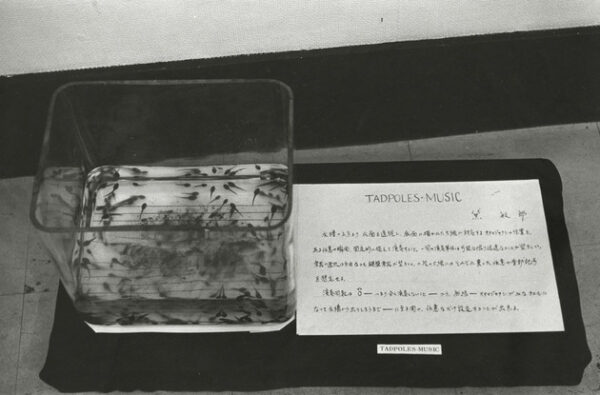
April 16–26, 1962. Gelatin silver print. 4 3/4 x 6 1/2″ (12.1 x 16.5 cm). Photographer unknown. The Gilbert and Lila Silverman Fluxus Collection Archives, I.11. The Museum of Modern Art Archives, New York
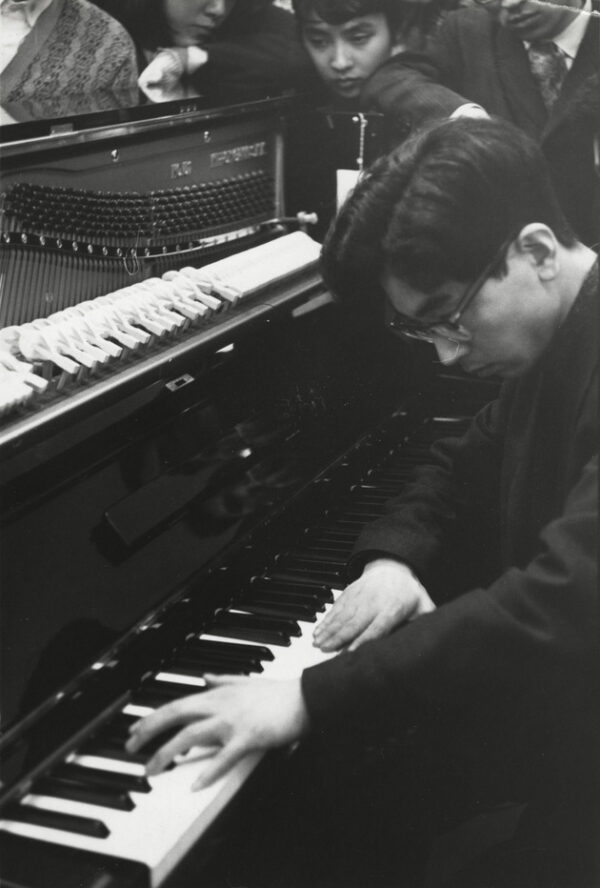
April 16–26, 1962. Gelatin silver print. 6 1/2 x 4 3/4″ (16.5 x 12.1 cm). Photographer unknown. The Gilbert and Lila Silverman Fluxus Collection Archives, I.12. The Museum of Modern Art Archives, New York
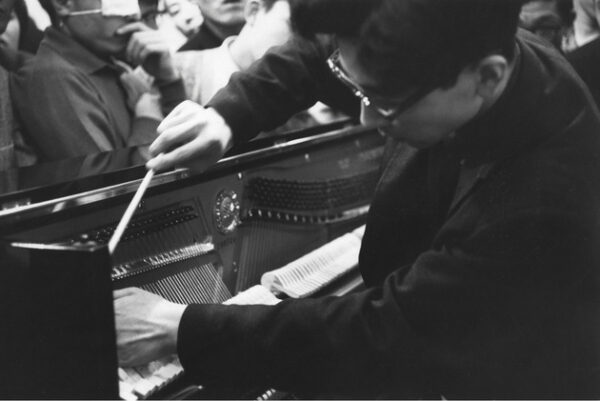
April 16–26, 1962. Gelatin silver print. 6 1/2 x 4 3/4″ (16.5 x 12.1 cm). Photographer unknown. The Gilbert and Lila Silverman Fluxus Collection Archives, I.12. The Museum of Modern Art Archives, New York
An Exhibition of World Graphic Scores

November 10–20, 1962. Offset, printed in black. Page spread: 13 5/16 x 7 1/8″ (34.6 x 18.1 cm). The Gilbert and Lila Silverman Fluxus Collection Archives, I.24. The Museum of Modern Art Archives, New York.

November 10– 20, 1962. Offset, printed in black. Page spread: 13 5/16 x 7 1/8″ (34.6 x 18.1 cm). The Gilbert and Lila Silverman Fluxus Collection Archives, I.24. The Museum of Modern Art Archives, New York.

November 10–20, 1962. Gelatin silver print. 4 3/4 x 6 1/2″ (12.1 x 16.5 cm). Photographer unknown. The Gilbert and Lila Silverman Fluxus Collection Archives, I.13. The Museum of Modern Art Archives, New York

November 10–20, 1962. Gelatin silver print. 4 3/4 x 6 1/2″ (12.1 x 16.5 cm). Photographer unknown. The Gilbert and Lila Silverman Fluxus Collection Archives, I.13. The Museum of Modern Art Archives, New York.

November 10–20, 1962. Gelatin silver print. 4 3/4 x 6 1/2″ (12.1 x 16.5 cm). Photographer unknown. The Gilbert and Lila Silverman Fluxus Collection Archives, I.13. The Museum of Modern Art Archives, New York.

November 10–20, 1962. Gelatin silver print. 4 3/4 x 6 3/8″ (12.1 x 16.2 cm). Photographer unknown. The Gilbert and Lila Silverman Fluxus Collection Archives, I.13. The Museum of Modern Art Archives, New York.

November 10, 1962. Gelatin silver print. 6 1/2 x 4 3/4″ (16.5 x 12.1 cm). Photographer unknown. The Gilbert and Lila Silverman Fluxus Collection Archives, I.14. The Museum of Modern Art Archives, New York.

November 10, 1962. Gelatin silver print. 4 3/4 x 6 1/2″ (12.1 x 16.5 cm). Photographer unknown. The Gilbert and Lila Silverman Fluxus Collection Archives, I.14. The Museum of Modern Art Archives, New York.

November 10, 1962. Resin-coated print. 9 13/16 x 11 7/16″ (24.9 x 29 cm). The Gilbert and Lila Silverman Fluxus Collection Archives, I.14. The Museum of Modern Art Archives, New York.

November 10, 1962. Gelatin silver print. 4 3/4 x 6 1/2″ (12.1 x 16.5 cm). Photographer unknown. The Gilbert and Lila Silverman Fluxus Collection Archives, I.14. The Museum of Modern Art Archives, New York.


March 27, 1962. The Gilbert and Lila Silverman Fluxus Collection Archives, I.32. The Museum of Modern Art Archives, New York.

Envelope postmarked March 31, 1962. The Gilbert and Lila Silverman Fluxus Collection Archives, I.32. The Museum of Modern Art Archives, New York.

Envelope postmarked May 21, 1962
Courtesy of Name June Paik. The Gilbert and Lila Silverman Fluxus Collection Archives, I.34. The Museum of Modern Art Archives, New York. © 2013 the artist.

Envelope postmarked May 28, 1962. Courtesy of Name June Paik. The Gilbert and Lila Silverman Fluxus Collection Archives, I.34. The Museum of Modern Art Archives, New York. © 2013 the artist.

Dick Higgins, 1962. The Gilbert and Lila Silverman Collection Archives, I.33. The Museum of Modern Art Archives, New York.



Offset score, page (each): 14 1/16 x 10 15/16″ (35.7 x 27.8 cm). Courtesy of Sylvano Bussotti. The Museum of Modern Art, New York. The Gilbert and Lila Silverman Fluxus Collection Gift. © 2014 Casa Ricordi.

Toshi Ichiyanagi, 1960. Ink and typewriting on transparentized paper. sheet (irreg.): 11 1/4 x 15 1/4″ (28.5 x 38.7 cm) The Museum of Modern Art, New York. The Gilbert and Lila Silverman Fluxus Collection Gift © 2014 the artist.

Yasunao Tone, 1961. Ink and typewriting on paper. Sheet: 8 1/4 x 11 5/8″ (21 x 29.6 cm). The Museum of Modern Art, New York. The Gilbert and Lila Silverman Fluxus Collection Gift © 2014 the artist.

Typewriting and pencil on paper; and ink, pencil and colored pencil on paper. sheet (score): 11 x 8 9/16″ (27.9 x 21.7 cm); sheet (diagram): 7 1/16 x 10 1/16″ (18 x 25.5 cm). The Museum of Modern Art, New York. The Gilbert and Lila Silverman Fluxus Collection Gift © 2014 the artist.

